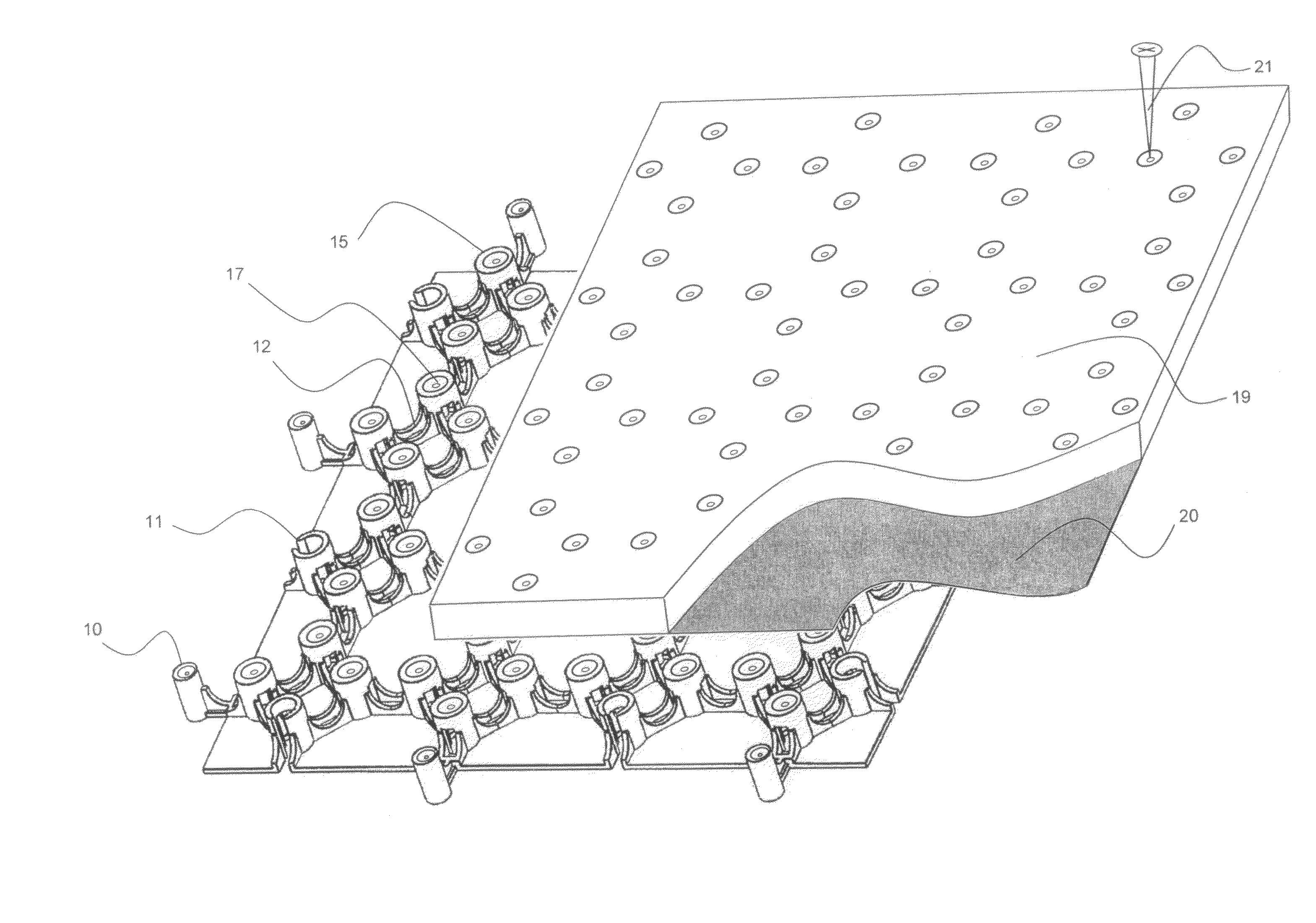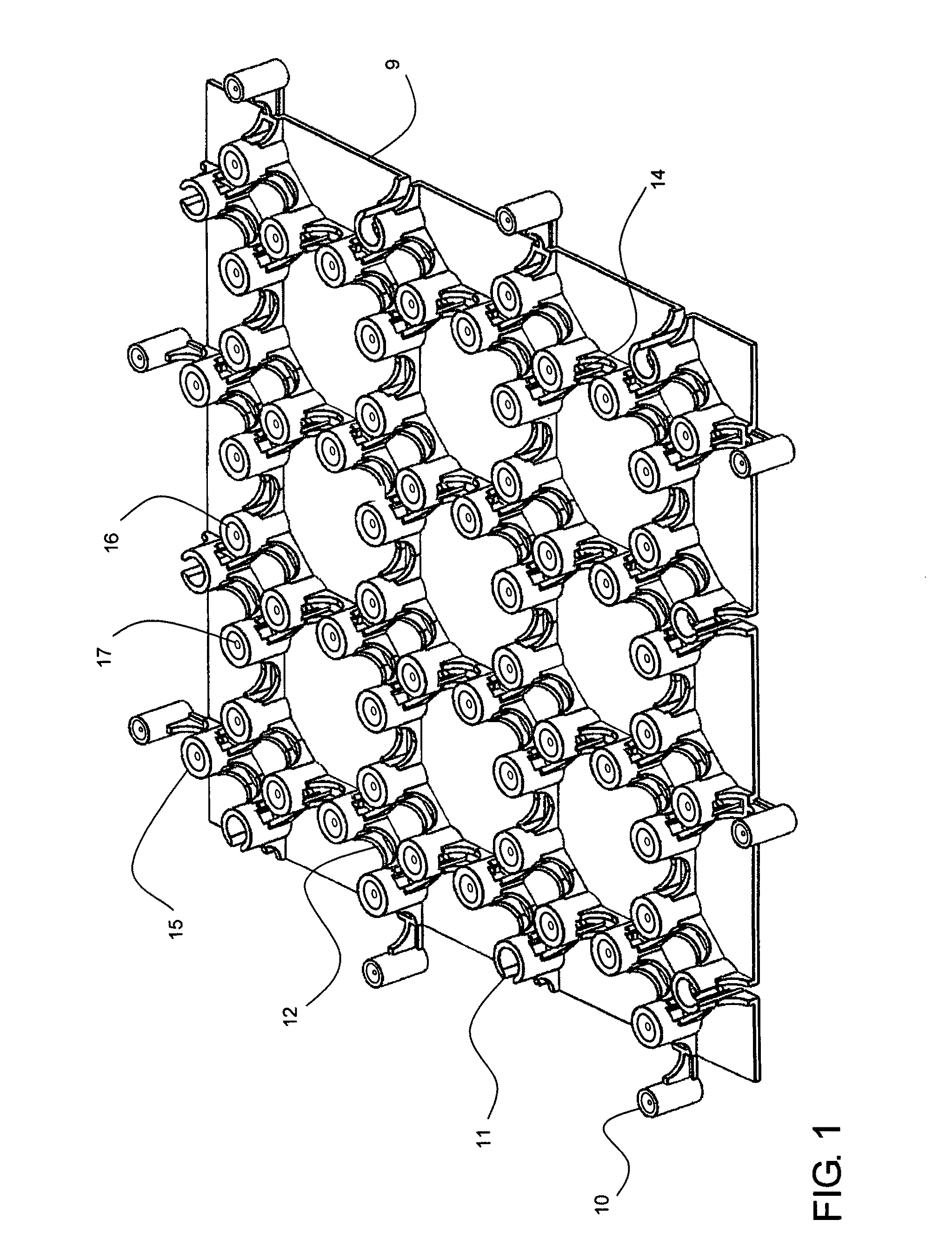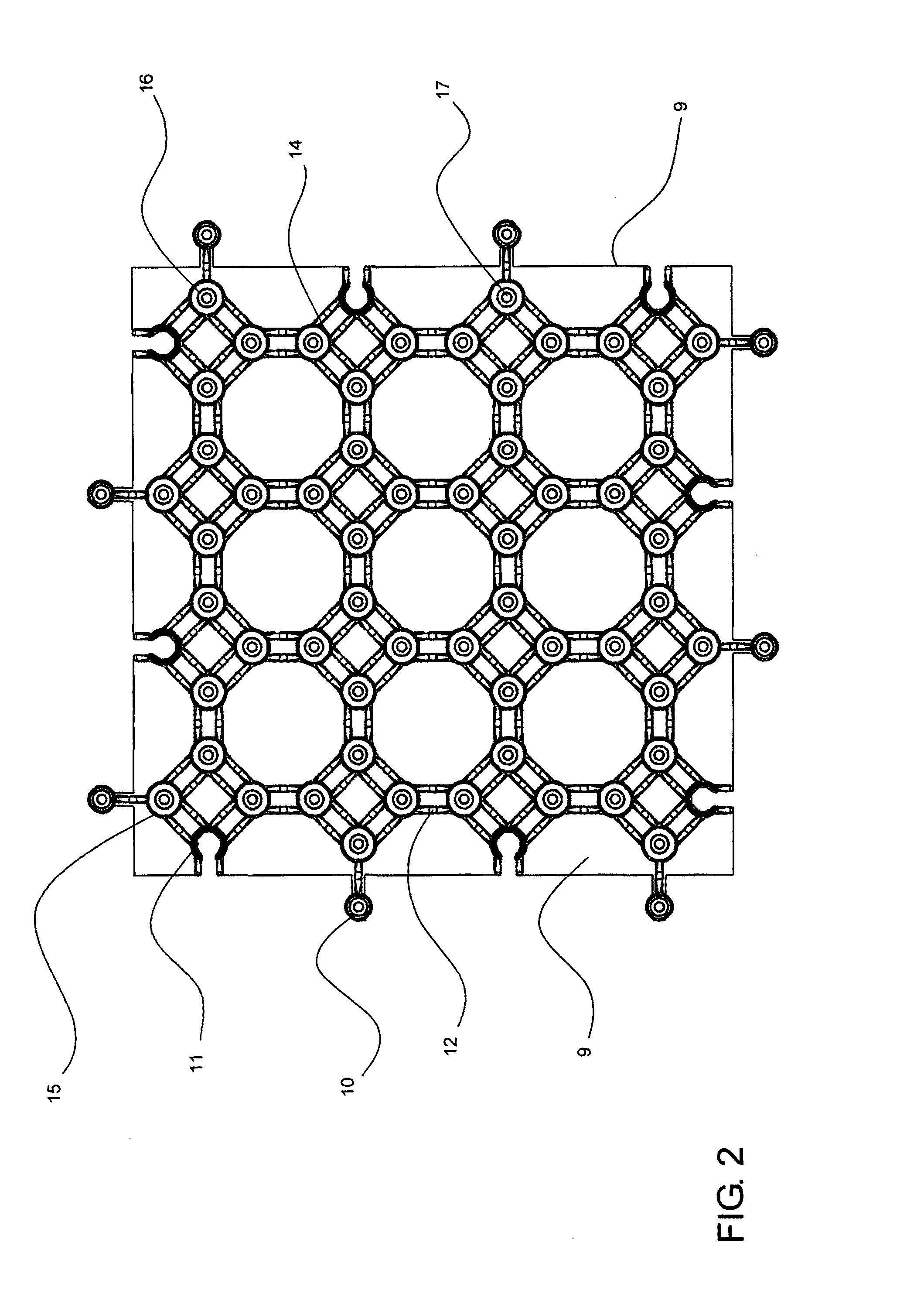Radiant mat grid
a technology of radiant mats and grids, applied in the direction of fluid heaters, heating types, lighting and heating apparatuses, etc., can solve the problems of inability to hold securely, inhibit heat transfer, and reduce efficiency
- Summary
- Abstract
- Description
- Claims
- Application Information
AI Technical Summary
Benefits of technology
Problems solved by technology
Method used
Image
Examples
Embodiment Construction
A single radiant Mat Grid tile (9) has an upper surface and a lower surface. There are a plurality of protuberances (10) extending beyond the perimeter of the radiant Mat Grid (9) around its circumference. Each protuberance or male knob (10) can snap securely into a corresponding protuberance receptacle or female knob (11) placed along the interior of the circumference of a neighboring tile. Each separate tile is snapped together with other tiles creating a monolithic Radiant Mat Grid matrix. The interior of each tile contains a plurality of weight bearing support knobs (15) on its upper surface. Each weight bearing support knob (15) has a recess at the upper end (16) and a screw guide opening (17) together comprising a screw recess unit. Each weight bearing support knob (15) can be used to mate with an additional top layer. A screw or other fastener means can be inserted through each screw guide unit via the screw guide hole (17) inside each weight bearing support knob (15) to atta...
PUM
 Login to View More
Login to View More Abstract
Description
Claims
Application Information
 Login to View More
Login to View More - R&D
- Intellectual Property
- Life Sciences
- Materials
- Tech Scout
- Unparalleled Data Quality
- Higher Quality Content
- 60% Fewer Hallucinations
Browse by: Latest US Patents, China's latest patents, Technical Efficacy Thesaurus, Application Domain, Technology Topic, Popular Technical Reports.
© 2025 PatSnap. All rights reserved.Legal|Privacy policy|Modern Slavery Act Transparency Statement|Sitemap|About US| Contact US: help@patsnap.com



